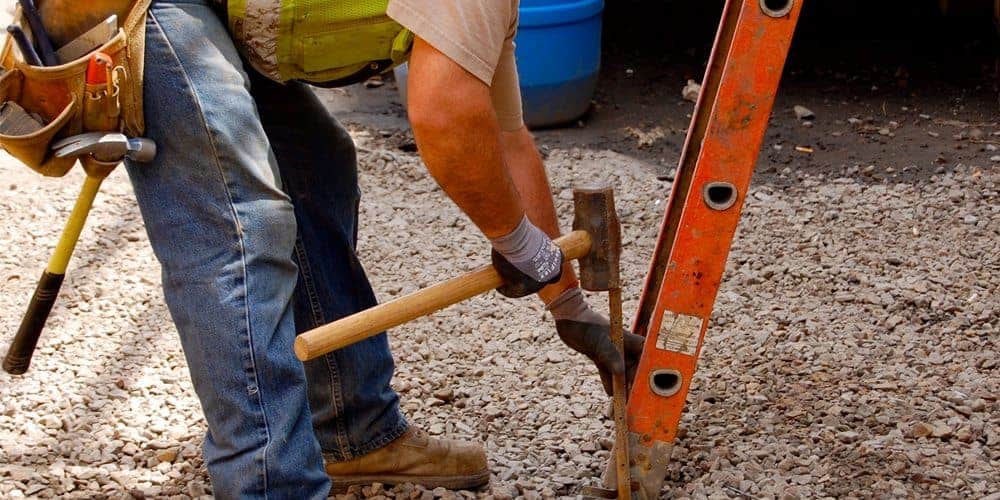If you are considering installing roof tiles on your home or commercial property, it is usually more convenient to hire a professional roofer to take care of the job for you. An experienced roofing company can complete the job skillfully and efficiently. However, it is possible to do the job yourself.
It is important to understand the steps to installing roof tiles correctly before attempting it. Read our article for tips on installing roof tiles the right way.
How Difficult Is It to Install Roof Tiles?
Retiling your roof is not a straightforward process. There are multiple steps to take, including removing what is currently on your roof, determining what type of new roof tiles you want, measuring your roof, and going through the installation steps.
Before getting to the process of installing new roof tiles, you will need to do preparatory work.

Before You Begin
As with any major property improvement job, you will need to take preparatory steps. Here’s a rundown of what to do before you start installing new tiles.
- Create an exhaustive list of the tools, materials, supplies, and equipment you will need.
- Acquire all necessary permits.
- Determine how much material will cover your whole roof (or the section of roof you will retile).
- Select the right tiles for the look and structural stability you want.
- Obtain the required tools and materials.
- Take measures to protect yourself during the entire roof tile installation process.
- Prepare your roof by removing the material that is currently in place.
You will likely have to rent a dumpster to collect the debris created in the process. Be sure to rent one that is large enough to hold all the materials you will remove from your roof.
The Benefits of Retiling Your Roof
You and your property will benefit from new roof tiles. In addition to presenting a more aesthetically pleasing look, your retiled roof will protect your home or business from the elements.
Benefits include:
- Weather Resistance: New roof tiles will protect your home against leaks.
- Energy Efficiency: Many new roofing materials are designed to provide your home or commercial building with better insulation and ventilation.
- Longevity: Retiling your roof with durable materials can lead to a long-lasting, hassle-free roof.
- Curb Appeal: New roof tiles can give your property a needed face-lift.
Roof Tile Types
There are many different types of roofing materials to choose from. You can pick tiles similar to what you already have or go with something completely different. When analyzing options, consider the following.
- Durability: Will your new roof last a long time? Can it handle the hailstorms, intense sun, or other climate phenomena common in your region?
- Budget: How much money have you allocated for your roofing needs?
- Size: If you have a large area to cover, is your building able to handle the weight distribution of your new roof? Will you need to select lightweight tiles?
- Cohesiveness: Will the style and color of the tiles you choose blend well with your property’s other features?
Weigh all the practical and aesthetic pros and cons before deciding which roofing tiles to select.
Tools and Materials You Will Need
Having the right tools for the job makes the difference between a well-installed roof and a poorly thrown together one.
With the proper tools, your process will go smoother, and you’ll achieve better results. Here’s a partial list of what to have available.
- Roofing tiles
- Ladder (learn about ladder safety)
- Helmet
- Hammer
- Caulk gun
- Circular saw
- Harness
- Utility knife
- Roofing nailer
- Staple gun
- Hook blades
- Sealant
- Vent flashing
- And more
Talk with experienced roofers and roofing supply store staff to find out what to get to complete the job well.

Step-by-Step: How to Install a Roof Tile
Details will vary depending on the type of roof you’re installing, but these steps will give you an idea of what’s involved.
Step 1: Make a List
We’ve started a list for you, but depending on what type of tile you’re installing, the current condition of your roof, and what’s recommended for roofs in your region, you’ll want to personalize your list of tools and materials you’ll need.
Step 2: Purchase What You Need
After figuring out what type of roof tile to install, calculating how much you’ll need, and determining that the weight of the materials is under what your building can handle, it’s time to buy all your materials and supplies.
Step 3: Ensure that the Frame is Reinforced
Before you begin installing new tiles, check the condition of the frame of the roof. If it’s weak or compromised, you’ll need to first reinforce it.
Step 4: Strip the Existing Roofing Materials
As you remove your old roof, make sure you don’t damage the frame or sheathing. Know what to get rid of and what to keep. Renting a dumpster to get rid of the debris that will be created in this step is helpful.
Step 5: Install the Underlayment
This material comes in rolls. Install and secure the protective underlayment, making sure to overlap sections, before you start to lay tiles.
Step 6: Add Battens
For steep roofs and any roof that presents specific architectural challenges, you may have to install battens – thin strips of wood or other material – to help hold the tiles in place.
Step 7: Install the Tiles
Now you’re ready to install your new roof tiles. Work systematically, starting with one side and moving along the length of your roof. Nail tiles either directly into the sheathing or into the battens. Some types of tile interlock and don’t require nailing. Check the manufacturer’s recommendations.
Step 8: Cut Tiles
You’ll encounter tight spots and other sections where you’ll have to cut some of the tiles to make them fit. Find out beforehand what type of saw you’ll need for the type of tile you’ve purchased.
Step 9: Place the Top Caps
With many types of roof tiles, you’ll finish the job by capping the tops, adding specialized ridge tiles.
After Steps 1-9 are done, clean up your property from miscellaneous roof debris and feel a sense of accomplishment for what you’ve just completed.
Professional Roofing Services
You may decide that the labor, necessary precautions, calculations, and installation time are just too much for you to handle on your own.
The good news is that professional roofing services are readily available to streamline the process and free up your time. For quality commercial roofing services, turn to Canopy. We will be happy to discuss your roofing needs, offer recommendations, and provide a quote. Reach out to us today.





